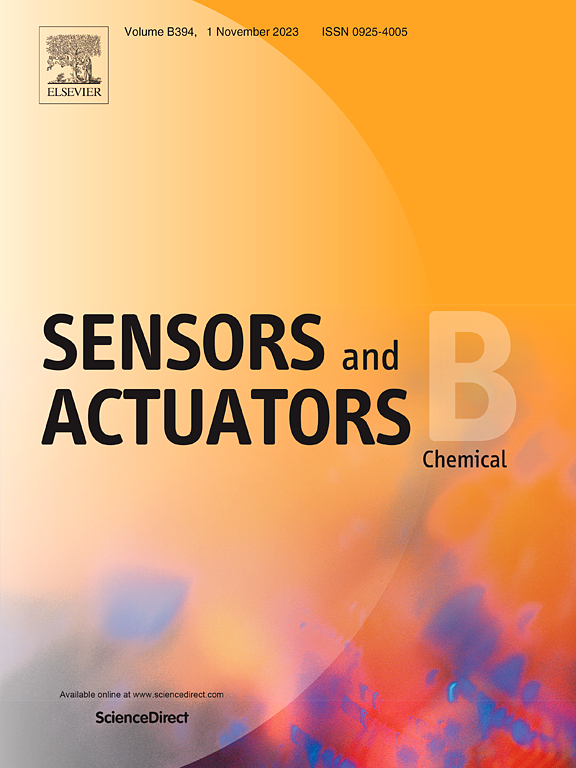Proximity-induced amplification cascade for accurate and sensitive colorimetric detection of tumor-derived exosomes
IF 8
1区 化学
Q1 CHEMISTRY, ANALYTICAL
引用次数: 0
Abstract
Tumor-derived exosomes have garnered immense interest as potential molecular markers for noninvasive diagnosis, treatment, and prognostic evaluation of cancer. Herein, we have reported a proximity-induced amplification cascade for achieving accurate and sensitive colorimetric detection of tumor-derived exosomes. Specifically, the proximity hybridization effect triggered by the binding of two aptamers to the adjacent proteins on the surface of the target exosomes will lead to the release of the trigger strand, initiating a cascade of subsequent three-way catalytic hairpin assembly and rolling circle amplification reactions. Consequently, a substantial amount of single-strand DNA will be generated, which can bind to numerous DNA- Pt@AuNPs signal probes and be efficiently captured by the multivalent capture interface, leading to dramatically intensified colorimetric signals for sensitive detection of tumor-derived exosomes. Benefiting from the synergy of multiple signal amplification strategies, a detection limit as low as 194 particles μL−1 has been achieved. In addition, the dual-molecular recognition enabled by proximity effect endows the sensing platform with excellent selectivity to distinguish target exosomes from other interfering exosomes, cell fragments and proteins. Notably, the proposed sensing platform can be successfully applied to the detection of targets in serum samples and can distinguish between MUC1/EpCAM-positive breast cancer patients from healthy individuals, highlighting its promising potential in clinical cancer diagnosis.
近端诱导扩增级联,用于准确灵敏地比色检测肿瘤外泌体
肿瘤外泌体作为潜在的分子标记物,在癌症的非侵入性诊断、治疗和预后评估方面引起了极大的兴趣。在此,我们报告了一种近距离诱导的放大级联,可实现对肿瘤外泌体的准确、灵敏的比色检测。具体来说,两种适配体与目标外泌体表面的相邻蛋白结合所引发的近距离杂交效应将导致触发链的释放,从而启动随后的三向催化发夹组装和滚动圈扩增反应级联。因此,将产生大量单链 DNA,这些 DNA 可与大量 DNA- Pt@AuNPs 信号探针结合,并被多价捕获界面有效捕获,从而产生显著增强的比色信号,用于灵敏检测肿瘤外泌体。得益于多种信号放大策略的协同作用,检测限低至 194 粒子 μL-1。此外,通过接近效应实现的双分子识别赋予了传感平台出色的选择性,可将目标外泌体与其他干扰外泌体、细胞碎片和蛋白质区分开来。值得注意的是,所提出的传感平台可成功应用于检测血清样本中的目标物,并能区分 MUC1/EpCAM 阳性的乳腺癌患者和健康人,凸显了其在临床癌症诊断中的巨大潜力。
本文章由计算机程序翻译,如有差异,请以英文原文为准。
求助全文
约1分钟内获得全文
求助全文
来源期刊

Sensors and Actuators B: Chemical
工程技术-电化学
CiteScore
14.60
自引率
11.90%
发文量
1776
审稿时长
3.2 months
期刊介绍:
Sensors & Actuators, B: Chemical is an international journal focused on the research and development of chemical transducers. It covers chemical sensors and biosensors, chemical actuators, and analytical microsystems. The journal is interdisciplinary, aiming to publish original works showcasing substantial advancements beyond the current state of the art in these fields, with practical applicability to solving meaningful analytical problems. Review articles are accepted by invitation from an Editor of the journal.
 求助内容:
求助内容: 应助结果提醒方式:
应助结果提醒方式:


